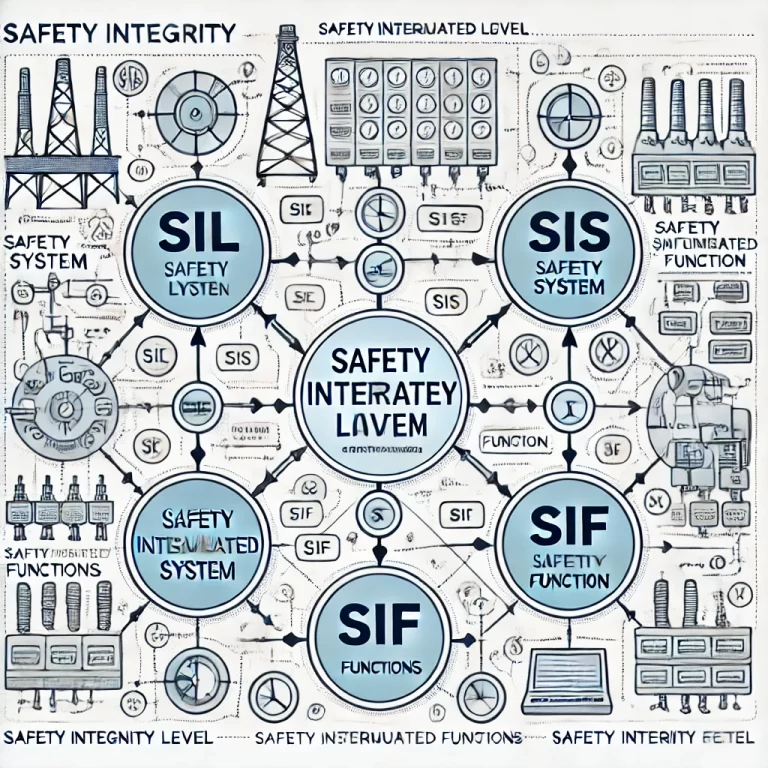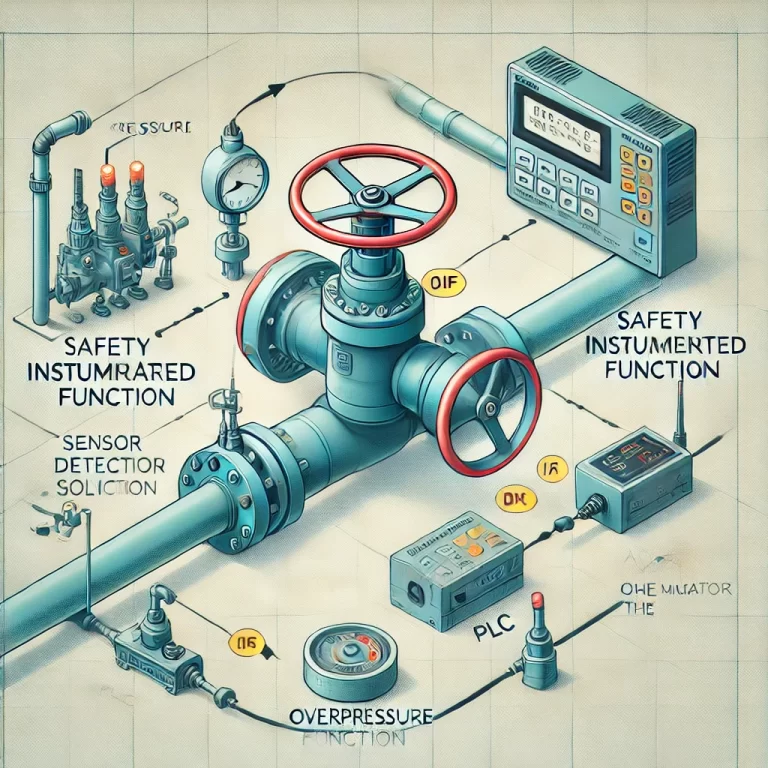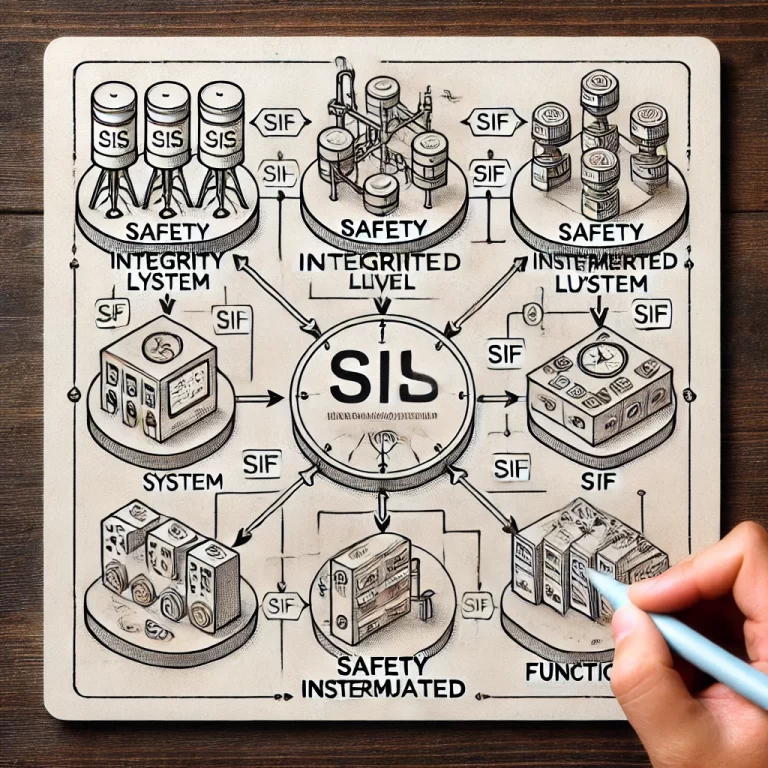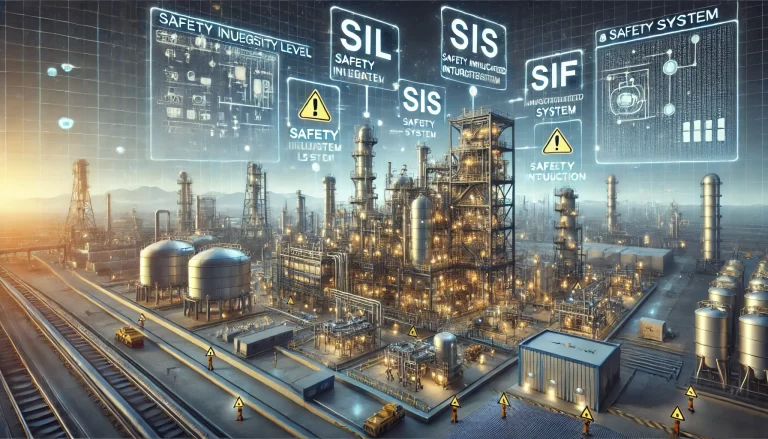In the realm of industrial automation and process control, safety is paramount, especially when dealing with critical systems where human lives and significant assets are at stake. Three key concepts related to functional safety often come up: SIL (Safety Integrity Level), SIS (Safety Instrumented System), and SIF (Safety Instrumented Function).
These terms form the backbone of safety standards in various industries, including oil and gas, chemical processing, and manufacturing. For an automation engineer, having a thorough understanding of these terms is essential for designing and implementing safe and reliable systems. Let’s explore each of these concepts in detail.

1. What is SIL (Safety Integrity Level)?
Safety Integrity Level (SIL) is a measure of the reliability and effectiveness of a safety system or function, particularly in terms of risk reduction. SIL levels are established based on a risk assessment that considers the severity and likelihood of hazards. Essentially, the SIL rating provides a quantifiable target for the performance of safety functions in reducing risks to an acceptable level.
SIL is categorized into four levels:
- SIL 1: Provides the least risk reduction, and is suitable for systems with relatively low safety demands.
- SIL 2: Provides a moderate level of risk reduction.
- SIL 3: Offers a high level of risk reduction, typically required in more dangerous environments.
- SIL 4: The highest level of risk reduction, used for extremely hazardous situations where failure can have catastrophic consequences.
The required SIL level for a given system is determined through a hazard and risk analysis, typically using methods such as Fault Tree Analysis (FTA) or Layer of Protection Analysis (LOPA). The higher the SIL level, the more reliable and robust the system must be, which often means higher design and implementation costs. Achieving a certain SIL level involves more stringent hardware and software reliability, as well as higher demands for testing and maintenance.

2. What is SIS (Safety Instrumented System)?
A Safety Instrumented System (SIS) is an engineered set of hardware and software controls designed to automatically take action to ensure a process operates within safe limits. The SIS is critical for preventing hazardous events by monitoring process conditions and taking corrective actions when necessary, such as shutting down equipment, controlling emergency valves, or activating alarm systems.
The SIS operates independently of the basic process control system (BPCS) and is solely focused on maintaining the safety of the operation. It is composed of the following core elements:
- Sensors: These detect hazardous conditions such as overpressure, high temperature, or abnormal levels in a process.
- Logic Solvers: These are typically programmable logic controllers (PLCs) or safety controllers that process inputs from sensors and make decisions on when and how to activate safety actions.
- Final Control Elements (Actuators): These execute the protective action, such as closing a valve, shutting down a motor, or triggering an alarm.
For example, in a chemical plant, an SIS might monitor pressure in a reactor vessel. If the pressure exceeds a safe threshold, the system could automatically vent excess pressure or shut down the process to prevent an explosion. This ensures that the process is kept within safe operational parameters without requiring manual intervention.

3. What is SIF (Safety Instrumented Function)?
A Safety Instrumented Function (SIF) is a specific function performed by the SIS to protect against a particular hazard. Each SIF is designed to address a specific unsafe condition or failure scenario by taking defined actions to reduce risk to a safe level. It includes input (sensor), logic (decision-making), and output (actuator) components working together to perform a specific task.
A simple example of an SIF might be as follows:
- Input: A pressure sensor detects that the pressure in a vessel has exceeded a dangerous level.
- Logic: The logic solver determines that the vessel is at risk of rupturing and decides to activate the emergency shutdown sequence.
- Output: A control valve is activated to vent pressure, or the process is shut down to prevent further escalation.
Each SIF is designed with a specific SIL rating based on the potential risk associated with the hazard it is intended to mitigate. For instance, a SIF protecting against a high-consequence event, like a toxic gas release, might need to meet SIL 3 or SIL 4 requirements to ensure the risk is sufficiently reduced.
The Relationship Between SIL, SIS, and SIF
The terms SIL, SIS, and SIF are closely related and work together to form a comprehensive safety strategy:
- SIS is the overall system responsible for ensuring safety. It encompasses multiple SIFs, each performing a different function to protect against specific hazards.
- Each SIF within the SIS is assigned a SIL rating, which indicates the level of risk reduction it provides. The higher the risk associated with the hazard, the higher the required SIL for the SIF addressing that risk.
For example, in an oil refinery, the SIS might include several SIFs, such as:
- A function to shut off fuel supply in case of overpressure.
- A function to activate an emergency cooling system if the temperature rises above a certain threshold. Each of these SIFs could have a different SIL rating depending on the severity of the hazards they are mitigating.

Why SIL, SIS, and SIF Matter for Automation Engineers
For automation engineers, understanding these concepts is crucial because they directly impact the design, implementation, and maintenance of safety-critical systems. Engineers must ensure that systems are designed to meet the required SIL levels, which often involves choosing the right equipment, conducting thorough testing, and ensuring ongoing system reliability through maintenance and monitoring.
Some key considerations for engineers include:
- Hardware and Software Design: Engineers must select components that meet the required SIL levels. This often means selecting redundant or fault-tolerant systems to ensure high reliability.
- Validation and Testing: Achieving SIL compliance requires rigorous testing and validation to demonstrate that the system meets its safety performance targets.
- Maintenance: SIL compliance doesn’t end with system installation. Regular testing and maintenance are needed to ensure that the system continues to perform its safety functions throughout its lifecycle.
Additionally, SIL levels influence the complexity and cost of safety systems. A system with a high SIL level will require more sophisticated and expensive safety measures than one with a lower SIL level. Engineers need to balance safety with cost-effectiveness, ensuring that risks are sufficiently mitigated without over-designing systems.

Conclusion
SIL, SIS, and SIF are fundamental concepts in functional safety that play a critical role in protecting people, the environment, and industrial assets. For automation engineers, understanding these terms is essential for designing safe, reliable systems that can prevent hazardous events and reduce risks to acceptable levels. By mastering the intricacies of these safety standards, engineers can ensure that their systems not only comply with safety regulations but also perform reliably in the most critical situations.
